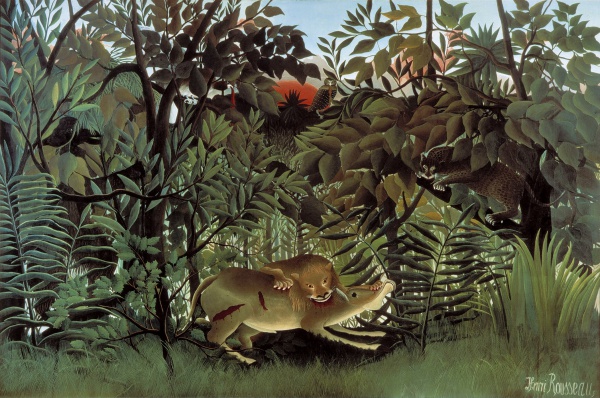Facts About The Hungry Lion Throws Itself on the Antelope
"The Hungry Lion Throws Itself on the Antelope" is a distinguished oil-on-canvas painting by Henri Rousseau, created in 1905. This work marked Rousseau's return to jungle-themed compositions after a decade-long hiatus, following the lukewarm reception of his 1891 painting, "Tiger in a Tropical Storm."
In this dynamic scene, a lion pounces on an antelope, surrounded by other jungle creatures, such as a panther, an owl, and a simian figure. Rousseau drew inspiration for the central animals from a diorama he observed at the Paris Muséum national d'histoire naturelle.
Although initially rejected by the esteemed Académie de peinture et de sculpture, Rousseau's work found a place at the Salon des Indépendants. "The Hungry Lion" made its debut at the Salon d'Automne in 1905, displayed alongside pieces by artists like Matisse and Derain. This exhibition contributed to the term "Fauvism" with Rousseau's painting influencing the movement through its bold, simplified use of color.
While critics generally disparaged Rousseau during his life, his intricate layering of green hues vividly animated the jungle scene. Despite the criticism, notable contemporaries such as Picasso, Matisse, and Toulouse-Lautrec appreciated his work. Today, "The Hungry Lion" is housed at the Fondation Beyeler gallery in Riehen, Switzerland, where it continues to mesmerize audiences.

 France
France